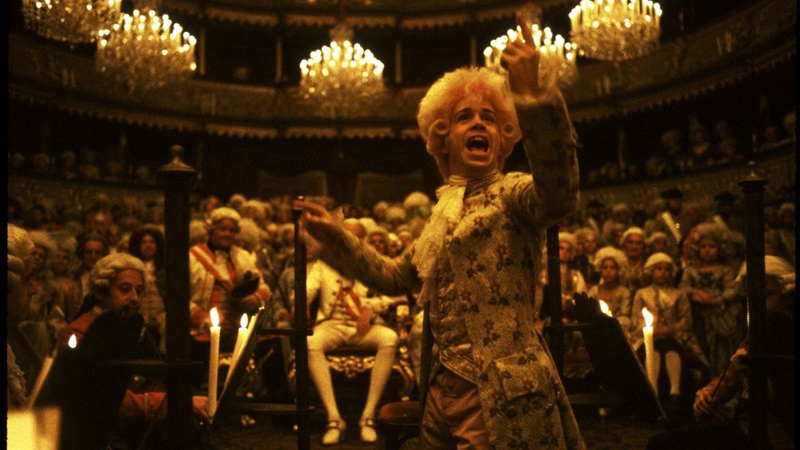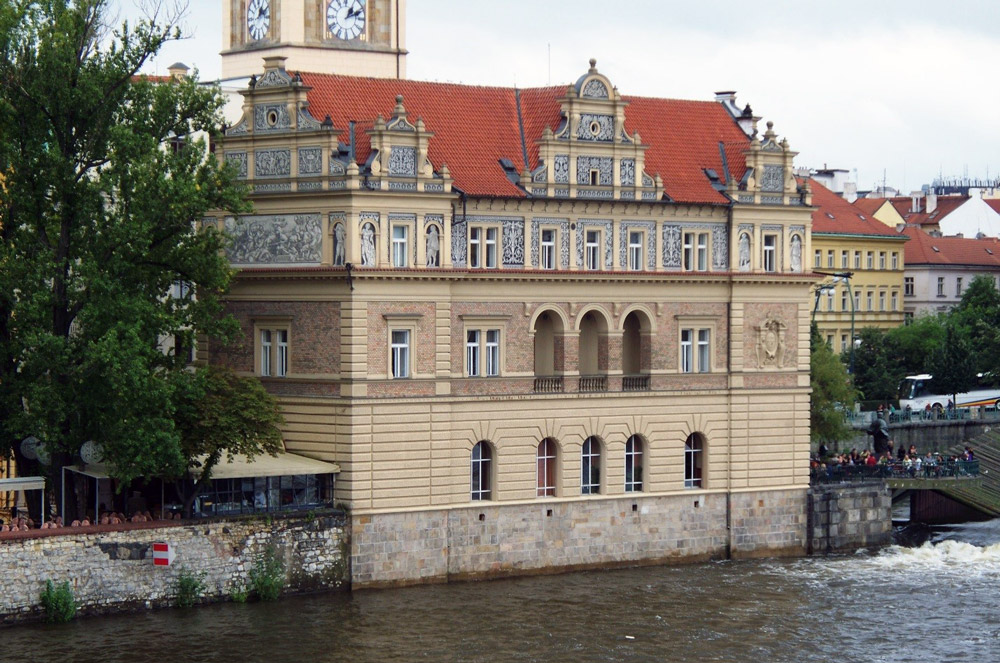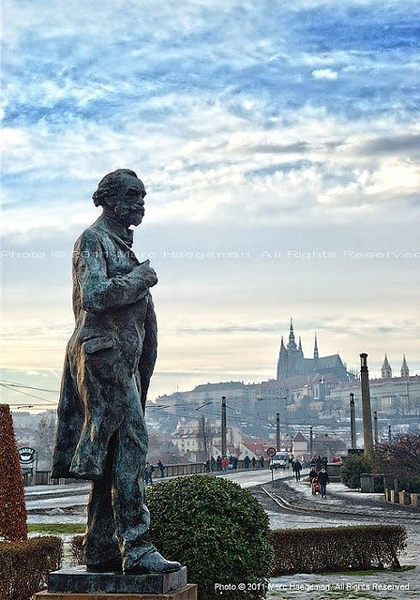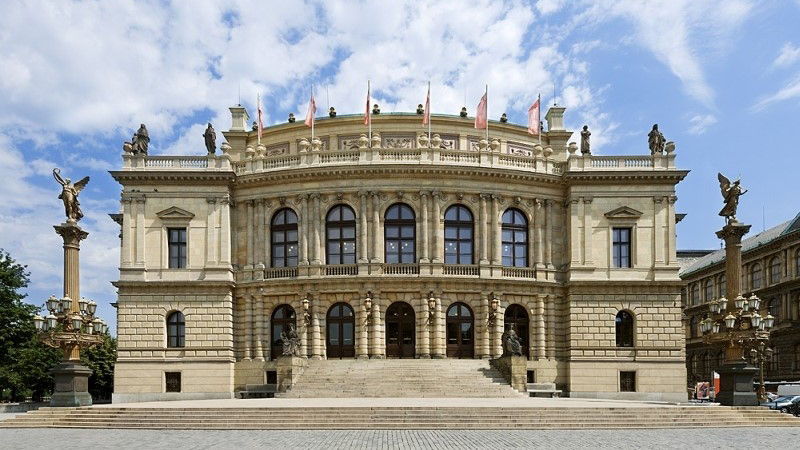BEAUTY of music | classical music in Prague
Earlier this month, we wished safe travels to our fearless leader, Joel Harrison, and our newly-christened American Pianists Awards winner, Drew Petersen, as they visited the beautiful Central European capital city of Prague. American Pianists Awards winners and finalists have participated in the Czech Republic’s American Spring Tour since 2003.

Prague, along with the rest of Bohemia, is an area that has been frequently dominated by outside forces—most often German speaking. The music from Prague, like the rest of its culture, often features conflicting tastes of international vs native style. Throughout its history, though, Prague has been an important musical center that was visited by the major performers of the day and featured first-rate local musicians.
From the mid-14th century until 1620, Prague flourished as the capital of the Holy Roman Empire, and the city enjoyed a rich musical life, but the Habsburg dynasty moved the capital from Prague to Vienna around 1622 following a bloody conflict against the Czechs. With the demotion of Prague and persecution of the Czech population, many of the best musicians fled to other European capitals to seek patronage. The Habsburg regime discouraged the use of the Czech language in literature and music, such that one can even find 19th-century Czech nationalist music in German.
As in Vienna and other European capitals, Praguers had a taste for Italian opera throughout the 17th and 18th centuries, mostly performed by foreign musicians. By the 1720s, opera enjoyed a regular home in Prague and several important works were premiered in the city. The city’s first permanent opera house, the Estates Theater, was established in 1783. The theater, which premiered Mozart’s Don Giovanni and La Clemenza di Tito, is still active today and represented Vienna’s original Burgtheater in the 1984 film Amadeus (most of the films exterior shots are filmed on the streets of Prague to take advantage of the period architecture). You can frequently hear Mozart’s operas in the Estates Theatre today performed by the Prague Opera.

Mozart wrote fondly about Prague and its people. He visited the city five times in his short life, and Prague embraced Mozart unlike any other city in Europe. His opera The Marriage of Figaro, caused such a sensation in Prague that he was invited to the city to hear its production. This 1787 trip is where Mozart premiered his “Prague” Symphony and where he received a commission for Don Giovanni which would receive its premiere in 1787. Mozart’s earliest biographer, the Czech philosopher and music critic Franz Xaver Niemetshek, wrote about Prague’s warm embrace of Mozart, “Figaro tunes echoed through the streets and the parks; even the harpist on the alehouse bench had to play ‘Non più andrai’ if he wanted to attract any attention at all.”
The Estates Theatre continued to be the center of musical life in Prague into the 19th century where its repertoire moved beyond Italian opera to include works by Beethoven and Weber and a number of French composers. Instrumental music was presented on a more ad hoc basis, and many touring musicians, including Beethoven, would visit the city to play concerts.
Following many efforts to establish a native musical style, nationalism began to sweep across Europe in the mid-19th century. A number of little-known Czech composers began incorporating folk music into their styles, and the polka became a favorite in the salons. Bedřich Smetana (1824 - 1884) would become the first internationally-known Czech composer. Smetana struggled to make a name for himself early in his life, and his participation in the Czech nationalist movement forced him to leave Prague when the Austrian Empire reasserted itself in the city. Smetana took a position in Sweden as a choirmaster, but returned to Prague in 1861 following the weakening of the Habsburgs. During this time, Smetana became the godfather of Czech nationalist music and the best-known Czech composer. His operas, including The Bartered Bride (1866), Dalibor (1868), and The Two Widows (1874), were the first Czech-language operas to enter the standard repertoire.

Antonín Dvořák (1841 – 1904), more so even then Smetana, would become Prague’s favorite son. Like Smetana, Dvořák’s music was heavily influenced by Bohemian folk music, and he wrote in nearly every genre of the time. All but one of Dvořák’s operas are written in Czech and demonstrate his commitment to Czech nationalism at a time when many in Prague wanted autonomy from the Austro-Hungarian Empire, which, as its name implies, did not give Czechs full status.

Leoš Janáček (1854 – 1928) would inherit the mantel from Dvořák and was heavily influenced by his study of folklore. Like Dvořák, Janáček wrote in nearly every genre of the time. His opera The Cunning Little Vixen is perhaps his best-known work today and his heavily influenced by his study of Moravian folk tunes (Moravia being another historical Czech country like Bohemia).

Following World War I, Prague was the capital of the short-lived independent Czechoslovak Republic. Prague’s musical institutions saw a period of development, including the Czech Philharmonic Orchestra. Museums were erected to honor Smetana and Dvořák, though no other Czech composers throughout the 20th century would rise to international recognition after Janáček. The Nazis would annex Czechloslovakia in 1938 and shut down most Czech musical institutions, and many musicians fled. Music flourished after the war, though, in the socialist state of Czechoslovakia, and many of the institutions were nationalized. The Prague Spring International Music Festival was established in 1946, and to this day it is one of the most important classical music festivals in the world. It runs from the middle of May through early June each year and is a destinations for music lovers worldwide. Prague was someone culturally isolated, though, by the iron curtain throughout the latter half of the 20th century.
Since the fall of the Soviet Union and the creation of the modern-day Czech Republic in 1992, Prague today is a dynamic European capital city with a rich history and a flourishing present. Though the people of Prague (especially its Jewish population) have endured repression, invasion, and discrimination, the cityscape was left relatively untouched by the destruction forces of the 20th-century, leaving a gem of Gothic, Renaissance, Baroque, and revivalist architecture.
---
Read about Drew Petersen's travels through the Czech Republic in our travel journal.